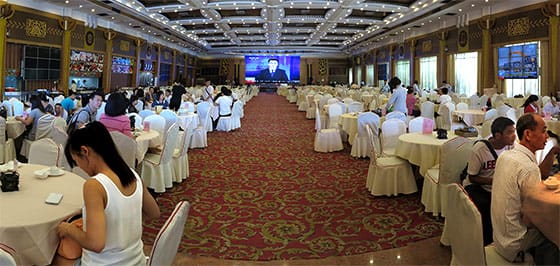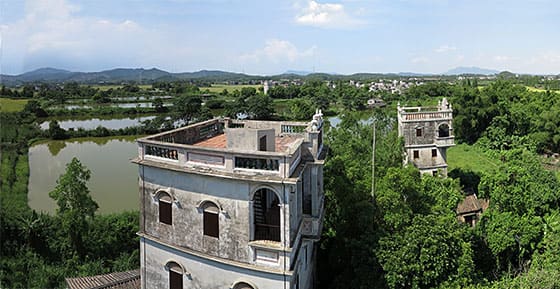05 Oct China: A Cultural Mishap
During June and July 2013 my wife and I took our children, both born in China, back to see where they came from. It was an incredible trip for all of us. For my children it made a very abstract part of their lives real. For my wife and I it completed a circle we began in 1997. This is the fifth post in a series of stories about our trip. But if you know me, you’ll know I’m attracted to the fringes of any narrative. That’s where the memories are. I won’t be giving any interminably long and boring slide shows of the trip but if you want to take a look at some of the photographs I took, feel free to do so in the comfort of your own Internet café.
A week before the end of our trip it was time to go to the city and orphanage where both my girls are from. Yangchun is where our children spent the first few months of their lives. It’s a “town” of two million people a few hours west of Guangzhou, capital of China’s southern province of Guangdong. After we split off from the rest of our tour group we flew to Guangzhou and met our tour guide and driver for this part of the trip, Tom and Jerry. Yes, Tom the driver and Jerry our guide. And they took great pleasure introducing themselves, knowing the cultural significance of their names.
Our drive to Yangchun would be four hours on a new nonstop freeway, much shorter than our two previous trips down bumpy back roads. The back roads allowed us to see a part of China off the tourist track. However, this time we took pleasure in driving the quicker and smoother road. Jerry asked us if we’d like to stop about half way at Kaiping, a town very distinct from other Chinese towns. This is where many immigrants to the U.S. and Canada came from in the early 20th century. I had noticed the distinct European colonial buildings called Diaolou on our previous trip and thought they were remnants of European rule in that part of China. Instead, I learned they were homes built by those first immigrants when they came back to China. And many of these homes were now part of a UNESCO World Heritage site.

I found out about the Super Typhoon from the TV in a Kaiping Restaurant. (Click on image to view entire photograph.)
As we ate lunch at a huge restaurant in Kaiping, I noticed they were talking about a “Super Typhoon Soulik” on the large screen TV at one end of the room (Chinese love to watch television while they eat in restaurants). I couldn’t understand what they were saying but I know what a map showing the path of a storm looks like. And it looked like it was heading right for us. I asked our guide about it. He watched the news report and told me not to worry. It would hit landfall in between Guangzhou and Shanghai (our next stop). “But, what about flying,” I asked. “Don’t worry. He’ll fly over it.” Oh so simple. I knew this was not the tidy end to this story.
A few days later, as we arrived at the Guangzhou airport to fly to Shanghai I noticed our flight was listed as “Normal” (China’s way of stating it was on time). As we said goodbye to Tom and Jerry at security, Jerry told me all would be fine. This would be the first time we on our own, without a tour group or guide. Once past security, what could happen? And, at the appointed boarding time, everyone lined up. Of course, without a translator I queued us up in a line that was boarding a flight to Kumming. The gate attendant pointed us to the next gate over.
Our boarding passes in hand for Shanghai, we stood at the door where a transit bus would take us to our plane. Now, there is a huge cultural dissonance between an American’s expectations when standing in a line and a Chinese’s. Americans politely take their place at the back of the line while Chinese just make their way to the front. Think of the chaos that used to be Southwest Airline’s boarding procedure. It was hot, we were tired, and it was getting near the end of our trip. And, to be honest, my adventurous and open approach to this very different culture was starting to wear thin. I made a few snide comments about these line cutters but they were under my breath and in English. (I was secretly hoping those people had good hearing and understood what I was saying.) We stood there for quite a while until there was an announcement over the public address system in Mandarian, of course. All of sudden, my fellow Chinese passengers started yelling. With no guide, I had to take extraordinary actions to find out what was going on.
I stood at the gate with other passengers who were yelling at the airline agent. I had no idea what they were saying but somehow I thought that if I stood there I would pick up everything I needed to know by osmosis. No chance. When the conversation seemed to be just an exercise in Chinese venting, I slowly backed away.
I scoped out the crowd and saw a European man (my sleuthing showed he held a Portuguese passport). “Do you speak English?” I asked. “Why of course,” he replied. He also spoke Chinese. Through him and a Chinese American I got the news that our flight had been delayed. First we were told that the plane had electrical problems. Apparently, no one believed that. Then were were told it was because of the typhoon. Air control was holding the plane. I braced for a 5 hour wait (as we had in one of our previous flights). The airport had free WiFi, but you had to get the password in a text message on your phone. In my case, that would be an international call and not free at all. My Portuguese friend kindly used his phone to find out the password. I braced myself and the family for a long wait.
I was sitting there writing emails to my friends apprising them of our international incident when, about an hour in, all of a sudden, everyone started lining up at the gate. I quickly ended my emails, leaving my friends on the hook and rounded up the girls (only after I got home did I get an email from one friend, frantically wanting to know what happened). Glory be, I thought. But wait. By this time in the trip, what I lacked in mastering the Chinese language, I had gained in understanding Chinese bureaucracy. Yes, we were boarding the plane. But until we took off I wouldn’t count on our good luck.

An International Incident Unfolding at the Guangzhou Airport (Click on image to view entire photograph.)
And, true to form, we sat on the tarmac for two hours before being cleared to take off. Still, a three hour delay is nothing in China. And I got a great photograph.





Sorry, the comment form is closed at this time.